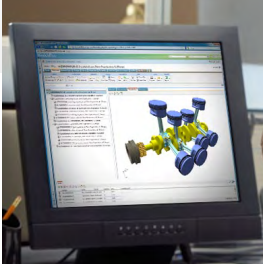Manufacturing companies that develop new products rely on product lifecycle management (PLM) software to effectively manage projects. Cars, electronics, medical devices, sports equipment – the right PLM tool can make any design process more efficient.
 Of course, there’s no “one-size-fits-all” solution that suits every single type of business. A large marketplace has created a wide selection of niche products that are specialized to provide unique capabilities. Taking account of those special factors is an essential part of choosing the right tool.
Of course, there’s no “one-size-fits-all” solution that suits every single type of business. A large marketplace has created a wide selection of niche products that are specialized to provide unique capabilities. Taking account of those special factors is an essential part of choosing the right tool.
Just like any marketplace, though, there are a few essential features and capabilities that are imperative to having a successful PLM tool. To stay ahead of the competition, businesses need a PLM tool that:
- Helps with storing, tracking and managing project data
- Offers embedded visualization
- Streamlines workflows
- Enables collaborators to work concurrently, regardless of location
- Offers multi-CAD data management
- Offers comprehensive bill of materials (BOM) management
- Offers change and configuration management
PTC Windchill: Top of the Heap

PTC Windchill ticks all of these boxes. Most Importantly, PTC Windchill is Document Neutral; meaning it will manage any document or CAD file! Its high level of efficiency and a powerful Web-based interface helps smaller organizations manage product content and processes effectively. Windchill is designed to help companies improve design reuse, broaden access to product information across roles, and ensure control over design versions and release processes.
PTC Windchill’s many features and benefits include:
- Manage the evolution of configurations over time using out-of-the-box lifecycle templates that can be modified and reused
- Create and manage multiple product structure views such as “As-Designed” and “As-Planned”
- Establish rules for interchangeability, including the use of alternates and substitutes
- Create new part numbers for significant changes, while maintaining existing numbers for minor changes using revision/iteration levels
- Utilize date, lot, product or component serial number effectivity methods
- Define and manage customer-specific product variations based on a defined set of available options
- Easily identify differences between multi-level BOM structures
- Create, manage, route and track problem reports, change requests, and change notices, using customer-defined terms and templates
- Securely vault all product data using check-in/check out, history, search and access control
- Track, store and share multiple versions/iterations of product structures, product definition data, Creo models and drawings, and (optionally) other MCAD and ECAD systems, including AutoCAD®, CADDS® 5, CATIA®, SolidWorks®, Unigraphics®‚ Inventor®, Mentor Graphics®, Zuken®, and Cadence®
- Manage and associate other product content, such as requirements, product specifications, technical publications, simulation results, production plans, software builds, engineering calculations and 3D viewable
- Query for any product-related information using the embedded search engine
- Assign automatic notifications for key events
- Learn more about PTC Windchill.
Read “The Seven Must-Have Components of PLM Solutions” for a checklist of what your PLM solutions needs to offer, and be sure to check out “Why PLM Has Become So Important for High-Tech Manufacturers” for an in-depth analysis of PLM.

